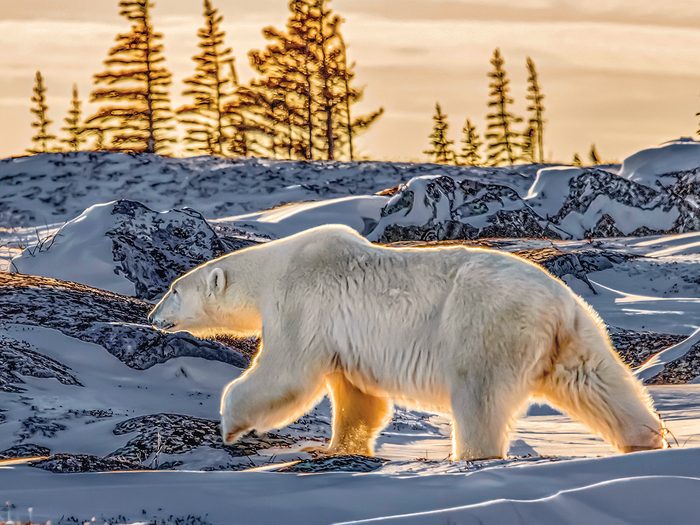
Where the Polar Bears Are
As a photographer, naturalist and explorer both above and below the ocean waves, I have adventured within many of Mother Earth’s environments and ecosystems. The Arctic, however, has always held a special fascination for me, being raised on and always engrossed in tales of the North as told by Farley Mowat and Jack London.
As one of our planet’s disappearing and most fragile ecosystems, the time was nigh for me to visit our Canadian Arctic.
After some research and inquiries, I decided that I would visit Churchill, Man., as the town was built smack dab in the middle of the world’s largest migratory staging area for the king of the Arctic, the polar bear. As many as 800 polar bears arrive each autumn as they wait patiently for the sea ice and Hudson Bay to freeze. Once frozen, the bears soon depart, trekking across the pack ice to the floe edge, where they will hunt ringed seals and not return again until early summer.
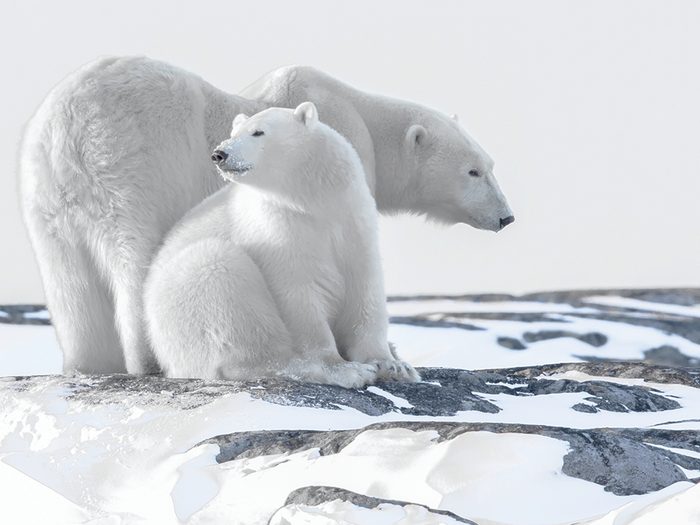
Planning for an Arctic Adventure
Although very beautiful, this Arctic icon is an extremely dangerous apex predator and you cannot just stroll the shoreline or the backcountry in and around Churchill and area. Unless accompanied by a Manitoba licensed and armed guide, visitors are prohibited from even exiting a vehicle while outside of the town.
There are, however, different ways to view the polar bears and other wildlife in the area, with bus tours and tundra buggies being the most economical and popular. Although quite expensive, you might also consider premium wildlife lodges situated along the coast offering snowmobile and guided walking tours. The other alternative is private guiding, which I prefer because as a photographer it allowed me the most versatility.
After many hours of homework and inquiries, I finally chose a guide for my Arctic adventure. Michael had not only lived and guided locally in Ontario’s Algonquin Provincial Park, but he’d also been guiding polar bear expeditions in Manitoba for more than 20 years. Michael seemed like a perfect choice and I was not disappointed.
Discover the best wildlife experience in every province.
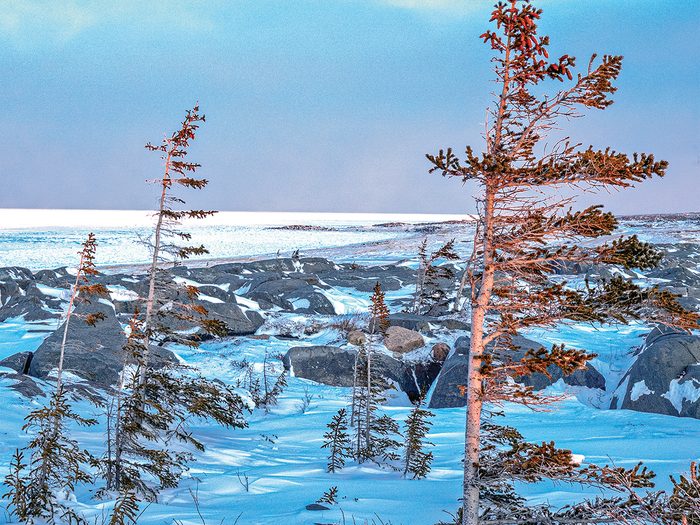
On the Open Shores
I flew from Winnipeg, arriving in Churchill on the morning of November 8, 2019. Although I could have chosen an October itinerary I purposely chose November as I needed to ensure that there would be snow on the ground to accurately compose Arctic wildlife in winter scenes.
It was a balmy -17°C when Michael collected myself and two other photographers from the Churchill airport and we headed to our lodgings for the week—a tidy five-bedroom flat. After dropping off our gear, we bought some groceries to prepare our own breakfasts and lunches for the week. We then did a quick tour and got the lay of the land along the shores of Hudson Bay, which, aside from eight to ten feet along the shore, was completely void of ice and remained open water.
For dinner that night, as with every night, we dined out at either the Dancing Bear or Tundra Pub restaurants. The fare offered at each was absolutely fabulous, the portions generous and a definite highlight to end each day.
This is what it’s like photographing wildlife in the dead of winter.
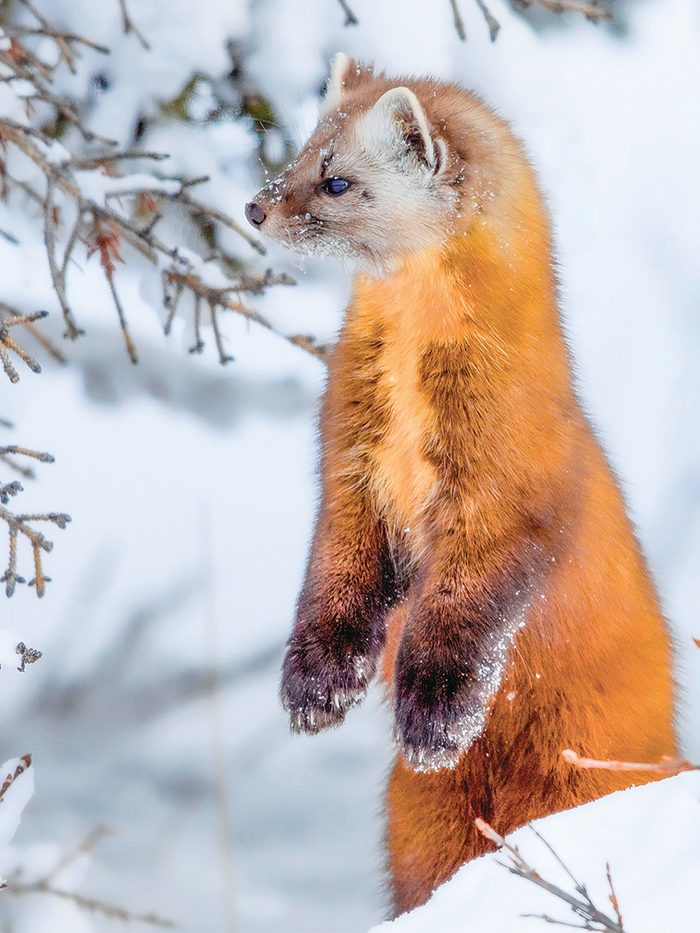
Icy Awakening
In the pre-dawn hours of the next morning, we were awakened to Michael shouting, “Better dress warmly people!” Incredibly, the temperature through the overnight hours had plummeted to a bone-chilling -37°C with 45 kilometre an hour wind gusts, making the temp -50°C with the wind chill. With the Arctic coldfront that had settled in overnight, Hudson Bay had gone from open water when I had arrived at lunchtime the previous day to completely frozen pack ice as far as the eye could see.
The appearance of this new overnight ice also signaled the disappearance of the polar bears. Anxious to begin the season’s seal hunt, most had departed during the night. Of course, not all of the bears went out with the ice as many moms with cubs still remained, cautiously avoiding the larger, aggressive and hungry males who would eat their cubs.
Although the polar bears were now not as plentiful as we’d hoped for, other species such as the American marten, Arctic hare, ptarmigan, red fox and cross fox, seemed to fit the bill perfectly.
Learn how these avid photographers capture British Columbia’s wildlife on camera.
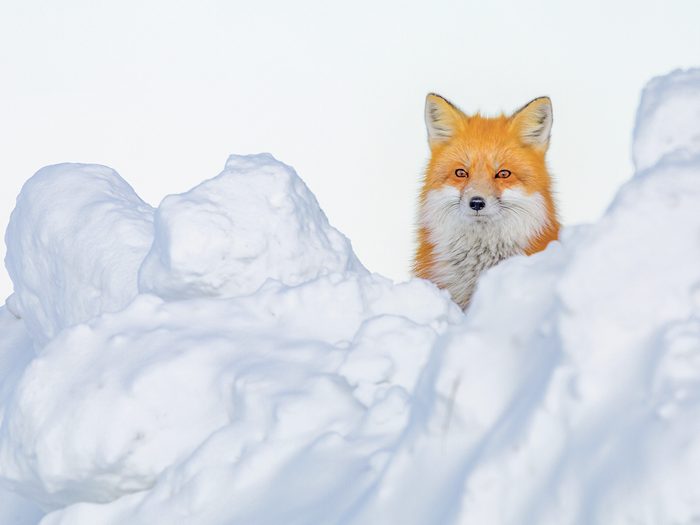
Setting up the Perfect Shot
As a visitor to this very unique Arctic ecosystem, my days here were numbered, and so like the red fox, I needed to be outdoors as much as possible regardless of the weather. Unlike its southern kin that is mostly nocturnal, the red fox in the Arctic remains active both day and night; the only way to survive these sub-zero temperatures is to continually fuel itself with food.
The Arctic air had now become so cold that even the snow became a fine crystalline icy powder and, whipped by the wind, it not only stung my face, but it produced a thin, hazy ground fog that added an extra element of climate to much of my Arctic photography.
Sporting her heavy winter coat, even the red fox looked chilled. Evoking a sincere empathy for wildlife in this ecosystem, she depicts the hardship that wildlife face in Canada’s harshest environment, our Canadian Arctic.
Next, check out how this wildlife photographer captures incredible candid shots of moose.